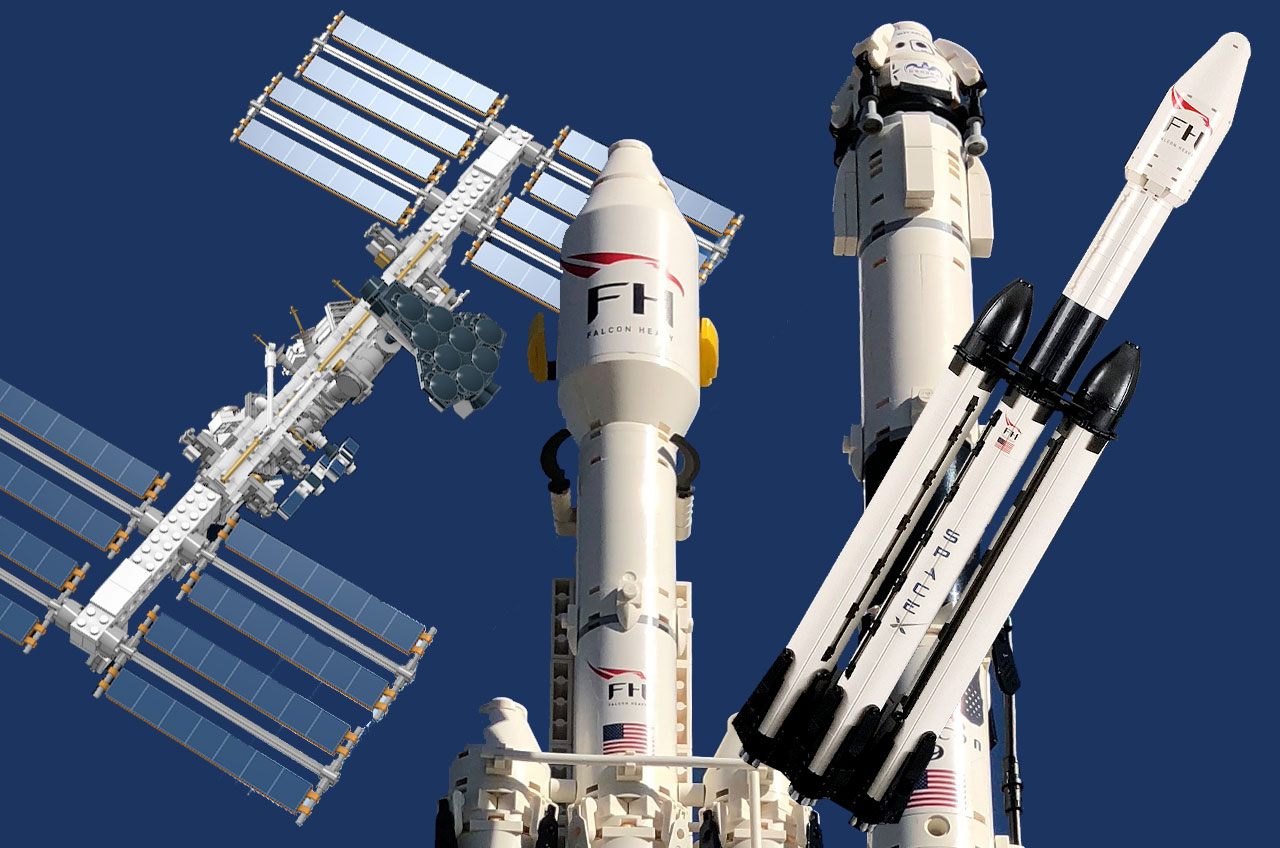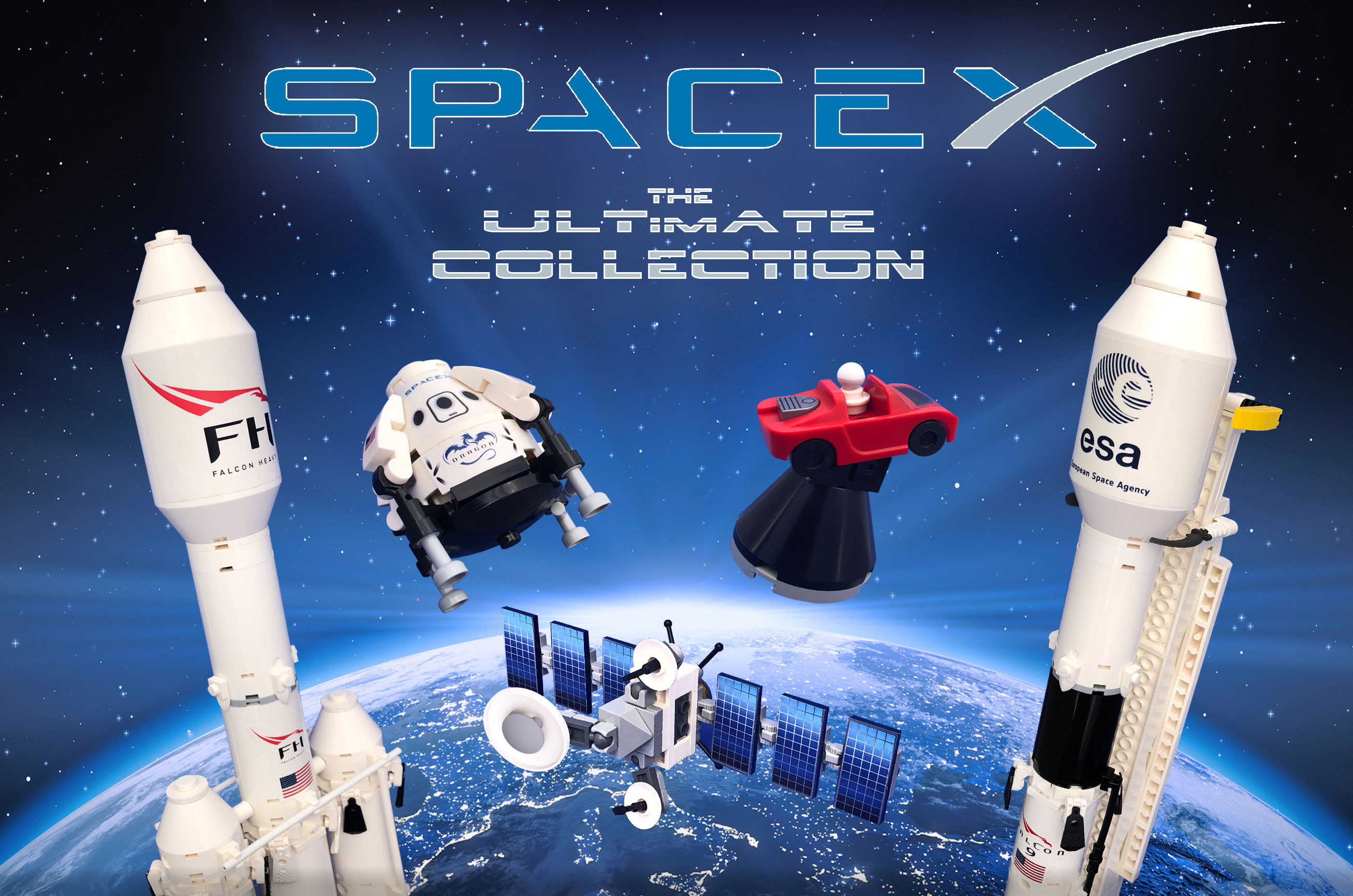SpaceX Rockets, Space Station Among Fan Ideas for Future Lego Sets

Two different takes on a SpaceX rocket and a second try at the space station have made it into Lego's latest review of fan-proposed toy sets.
Monday (Sept. 3) marked the deadline for projects on the Lego Ideas website to receive 10,000 votes, qualifying them to be part of the second production review of the year.
"We can welcome 10 creative product ideas into the review after they managed to reach the 10,000 supporter mark between the months of May 2018 and September 2018," wrote manager Hasan Jensen on the Lego Ideas website. "A big congratulations to all members who worked so hard to achieve this milestone!" [Astronaut Builds Lego Space Station Inside Real-Life Space Station]
Out of the 10 that made Monday's cut — including a black and white "Steamboat Willie" set timed to Mickey Mouse's 90th birthday and a color-coded M&M's candy dispenser — three ideas were themed around real-life rockets and spacecraft. Two celebrated Elon Musk's family of Falcon launch vehicles and the third marked a fan's second attempt at getting Lego to make a scale model of the International Space Station.
Kevin Hehmeyer, a high school science teacher from Ohio, launched his idea for a Lego brick model of SpaceX's Falcon Heavy on Feb. 6, 2018, the same day that the real rocket lifted off on its first test flight. Four months later, his project received its 10,000 vote.
"One of the amazing perks of being a science teacher is that I actually get paid to talk about rockets," wrote Hehmeyer in May when his school let out for the summer. "I took the opportunity to use my FH [Falcon Heavy] as a means to really engage my students in the classroom this year."
"If I can do my part to motivate our youth to get involved in [science, technology, engineering and math] STEM-related programs and careers, then I believe I've done my job successfully," said Hehmeyer. "And I like to think that the future of science and space exploration will benefit from what these kids bring to the table."
Breaking space news, the latest updates on rocket launches, skywatching events and more!
Between February and June while his FH was still open for votes, Hehmeyer continued to update his design to reflect the latest changes introduced by SpaceX and to even add a to-scale cherry-red Tesla Roadster — as launched by the first Falcon Heavy.
Matthew Nolan of Sydney, Australia worked with Valerie Roche of Paris, France to also create a Falcon Heavy and other vehicles as part of their "SpaceX Ultimate Collection," which they submitted to Lego Ideas just as Hehmeyer's project was qualifying for review. In addition to the Falcon Heavy, Nolan and Roche included SpaceX's Falcon 9 rocket with Dragon spacecraft and the transporter-erector used to launch both boosters.
Nolan and Roche designed their rockets to match the scale of Roche's previously approved project, the NASA Apollo Saturn V, which Lego selected for production in 2017. Their SpaceX Ultimate Collection is built from 1,583 Lego bricks.
"We'd like to thank every single one of the 10,000 supporters who got behind this product idea," wrote Nolan and Roche in June. "As we hand the reigns over to the reviewers, your collective enthusiasm has helped tilt probability a key step closer to making SpaceX Lego a reality."
Christoph Ruge of Germany first submitted his model of the International Space Station in 2014. A year and 10,000 votes later, his project qualified for review but in November 2015 was passed over by Lego for production.
Instead of abandoning the idea, Ruge retooled his design, reducing the number of Lego bricks by about 200 and scaling the model to match another popular Lego Ideas project launched for sale in 2017.
"Sizing your model to fit the scale of the space shuttle from the Women of NASA set makes it a great way to connect to other existing Lego sets," wrote Lego when Ruge's space station achieved support for the second time in June of this year. "It's a great tribute to one of human kinds' most impressive engineering feats and one that celebrates collaboration across borders."
Lego designers, product managers and other team members will next assess the projects for their playability, safety and fit with the Lego brand. The results may not come until next year though, as the board must first complete its work on the first Lego Ideas review of 2018, a set of 10 others qualifying models that included a model of NASA 844, the SR-71A Blackbird that flew the aircraft fleet's final flight in 1999.
If either of the SpaceX projects or the International Space Station is approved for production, it will join previous Lego Ideas space-themed products, including models of Japan's Hayabusa asteroid sample spacecraft, NASA's Mars Curiosity rover, the Apollo Saturn V moon rocket and the Women of NASA minifigures set.
Follow collectSPACE.com on Facebook and on Twitter at @collectSPACE. Copyright 2018 collectSPACE.com. All rights reserved.

Robert Pearlman is a space historian, journalist and the founder and editor of collectSPACE.com, a daily news publication and community devoted to space history with a particular focus on how and where space exploration intersects with pop culture. Pearlman is also a contributing writer for Space.com and co-author of "Space Stations: The Art, Science, and Reality of Working in Space” published by Smithsonian Books in 2018.
In 2009, he was inducted into the U.S. Space Camp Hall of Fame in Huntsville, Alabama. In 2021, he was honored by the American Astronautical Society with the Ordway Award for Sustained Excellence in Spaceflight History. In 2023, the National Space Club Florida Committee recognized Pearlman with the Kolcum News and Communications Award for excellence in telling the space story along the Space Coast and throughout the world.




